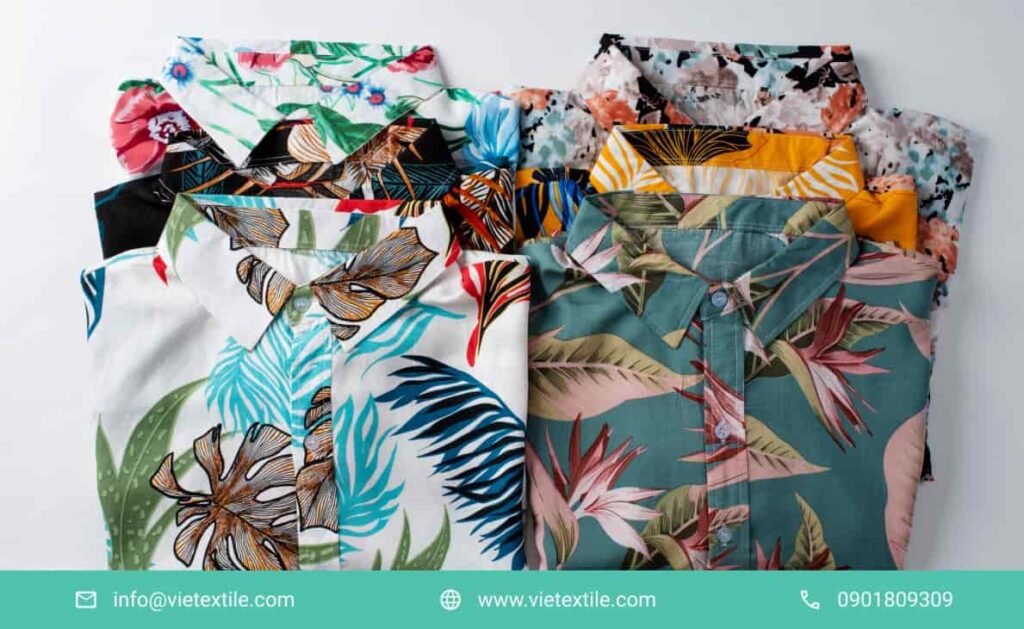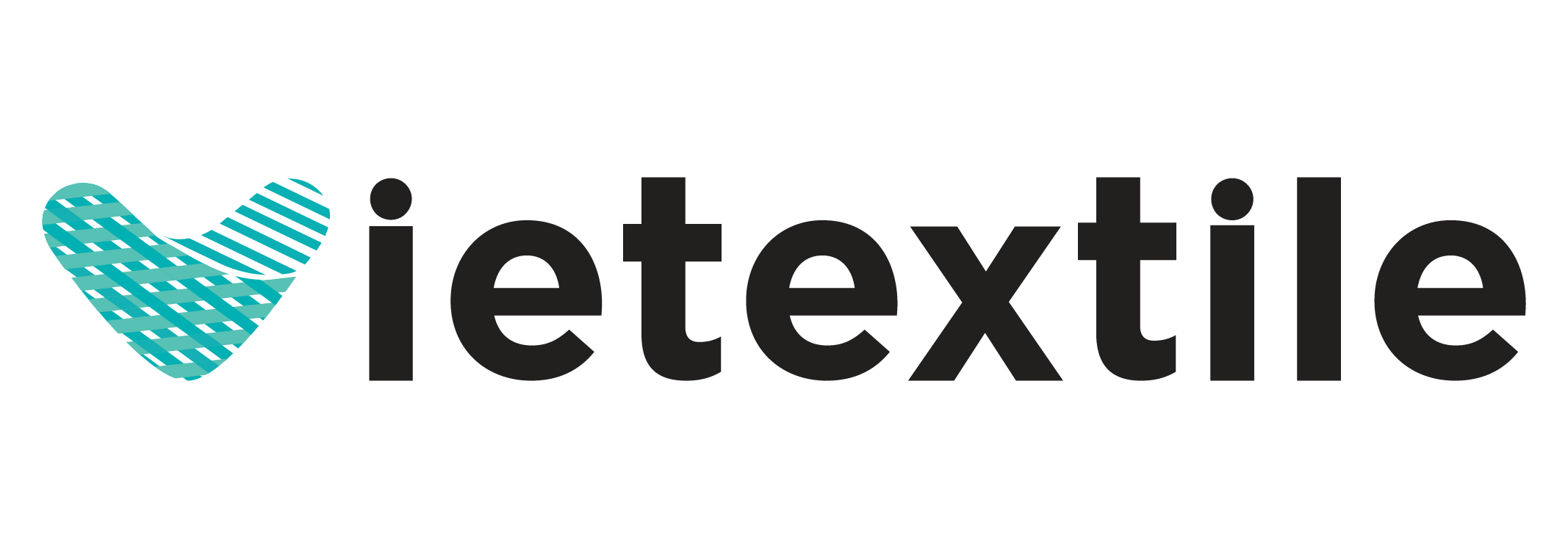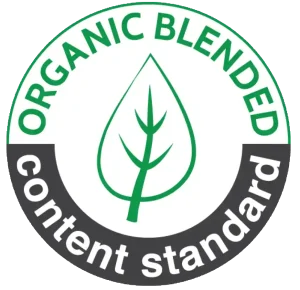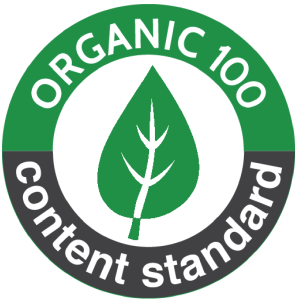Cotton remains the king of natural fibers in the global textile market, prized for its breathability, comfort, and versatile handle. As the textile industry rapidly shifts towards digital production methods, the challenge lies in matching the inherent quality of the cotton fiber with a printing ink system that ensures vibrant, durable, and commercially viable results.
For direct printing cotton fabric, no other ink chemistry delivers the performance, color brilliance, and wash fastness of reactive inks. This necessity is not merely a preference but a mandate dictated by fundamental organic chemistry.
The core reason reactive inks are mandatory for direct printing cotton fabric centers on the chemical structure of cellulose, the polymer that constitutes the cotton fiber. Reactive dyes are the only class of dyestuffs that form a permanent, irreversible covalent bond with the cellulose molecule.
This covalent linkage is the strongest possible type of chemical attachment, making the color an intrinsic part of the fiber itself. In contrast, other ink systems—such as pigment or acid dyes—rely on weaker mechanical encapsulation or less durable ionic bonds, which inevitably compromise the finished product’s longevity and performance.
This comprehensive technical guide will delve into the molecular-level interactions, the critical role of pre-treatment chemicals (alkali and urea), the fixation process (steaming), and the necessity of thorough post-treatment washing to maximize color yield and establish commercial-grade fastness on direct printing cotton fabric. We aim to provide textile manufacturers and digital print managers with the technical foundation necessary to optimize their workflow and achieve premium results consistently.

1. The Receptor: Understanding the Chemistry of Cotton Cellulose
Nội dung tóm tắt
ToggleTo understand why reactive inks work best, one must first understand the chemical makeup of the cotton fiber itself. Cotton is essentially pure cellulose, a long-chain polymer of repeating D-glucose units.
1.1. The Critical Hydroxyl Group (-OH)
The cellulose polymer is rich in hydroxyl (-OH) groups. These groups are the active chemical sites on the cotton molecule, making the fiber highly hydrophilic (water-loving).
- Chemical Reactivity: The hydrogen atom in the hydroxyl group can be substituted. Under the correct alkaline conditions (provided by pre-treatment), the hydroxyl group de-protonates, forming a highly reactive celluloxide anion (Cell-O-).
- Bonding Site: This Cell-O- anion acts as a strong nucleophile, meaning it has a free electron pair ready to attack and form a chemical bond with an electron-deficient site—precisely the site provided by the reactive dye molecule. The concentration and accessibility of these -OH groups determine the maximum saturation and color depth achievable on the direct printing cotton fabric.
1.2. The Fiber Morphology Challenge
Cotton fibers have both crystalline (highly ordered, dense) and amorphous (disordered, open) regions. The printing process must facilitate dye penetration into both areas to achieve deep, robust coloration.
- Penetration Depth: Unlike surface-level mechanical adhesion (pigments), reactive dyeing requires the dye molecule to penetrate deep into the amorphous regions of the direct printing cotton fabric. This penetration is aided by high moisture content and heat (steaming) during fixation.
2. The Agent: The Dual Nature of Reactive Inks (Direct Printing Cotton Fabric)
Reactive inks are a sophisticated class of dyestuffs specifically engineered to exploit the chemical structure of cellulose. Each reactive dye molecule contains two essential functional parts.
2.1. The Chromophore
The chromophore is the part of the molecule responsible for the color we perceive. It selectively absorbs and reflects light wavelengths.
- Azo and Anthraquinone Structures: Reactive chromophores are typically complex ring structures (azo or anthraquinone) designed for high molar absorptivity, translating into bright, vivid colors and a high color yield on the direct printing cotton fabric.
2.2. The Reactive Group
This is the chemical “hook” that distinguishes reactive dyes from all other classes. It is the site that forms the covalent bond with the cotton fiber.
- Vinyl Sulfone (VS) and Triazine (MCT/DCT): The two most common reactive groups in digital inks are the Vinyl Sulfone (VS) group (often sold as a sulfatoethyl sulfone derivative) and the Monochloro-Triazine (MCT) or Dichloro-Triazine (DCT) groups.
- VS Mechanism: In an alkaline environment, the VS group converts into a highly reactive vinyl sulfone state (R-SO2-CH=CH2). The celluloxide anion (Cell-O-) from the cotton attacks this double bond, resulting in the permanent covalent bond.
- Triazine Mechanism: The chlorine atoms on the triazine ring are highly susceptible to nucleophilic attack. The celluloxide anion attacks the carbon atom on the triazine ring, displacing the chlorine atom and forming a strong chemical link.
2.3. The Chemistry of the Permanent Link
The resulting dye-fiber bond is a permanent ether linkage (Cell-O-C). Because this bond is covalent, it is resistant to breaking under normal washing, laundering, and friction conditions, giving the direct printing cotton fabric its superior fastness properties.
3. The Catalytic Environment: Pre-Treatment and Fixation

The chemical reaction between the reactive dye and the cotton fiber cannot occur in neutral or acidic conditions; it requires a highly specific catalytic environment. This environment is created by the pre-treatment and sustained during the fixation process.
3.1. The Pre-Treatment Mandate: Alkali and Urea
The initial stage of preparing the direct printing cotton fabric involves padding the fabric with a precise pre-treatment solution. The two most critical components are the alkali and the humectant.
- Alkali (Sodium Carbonate/Bicarbonate): This raises the pH of the cotton to the required alkaline level (typically pH 10.5–12.0). The high pH de-protonates the hydroxyl groups on the cellulose (creating Cell-O-) and activates the reactive groups on the dye molecule (e.g., forming the vinyl sulfone state). Without the alkali, the reaction rate is too slow, leading to minimal color fixation.
- Urea (The Humectant): Urea is a powerful hygroscopic agent (moisture retainer). In digital printing, ink drops dry almost instantly. Urea keeps the dye molecules solubilized and mobile on the direct printing cotton fabric surface and within the fiber structure long enough for the dye to find and react with the activated celluloxide sites during the subsequent steaming process.
3.2. The Fixation Stage: Steaming
After printing, the direct printing cotton fabric is dried and then fixed, typically in a saturated steam chamber (100–105°C) for several minutes.
- Steam Energy: The saturated steam provides the necessary thermal energy and high moisture content. The heat accelerates the chemical reaction kinetics, and the moisture ensures that the dye and alkali remain dissolved and highly mobile, allowing maximum penetration and reaction efficiency between the dye’s reactive group and the cotton’s celluloxide anion.
- Incomplete Fixation: If the steaming temperature is too low or the time too short, the reaction is incomplete. The unfixed dye will remain chemically inert on the surface of the direct printing cotton fabric, resulting in reduced color depth and poor wash fastness when it is subsequently washed off.
4. The Competition: Why Other Inks Fail on Direct Printing Cotton Fabric
While other ink systems exist, their underlying chemical mechanism makes them unsuitable for achieving the highest commercial standards on cotton.
4.1. Pigment Inks: Mechanical Adhesion (The Binder Barrier)
Pigment inks are universal and can print on any direct printing cotton fabric, but they are not the best option for cotton.
- Mechanism: Pigments are microscopic, insoluble particles encapsulated by a polymeric binder (a kind of chemical glue). The binder forms a film on the surface of the fabric, mechanically trapping the color. No chemical bond is formed with the cellulose.
- Limitations:
- Hand Feel: The polymer film sits on the surface, making the fabric stiff, especially in areas of high ink coverage.
- Durability: The print’s fastness is entirely dependent on the strength of the binder, not the fiber-dye bond. Over time and repeated washing, this binder film degrades, leading to gradual color loss and cracking.
- Vibrancy: The pigment particles scatter light more than chemically bonded dyes, often resulting in a duller appearance compared to the clarity of reactive dyes on the direct printing cotton fabric.
4.2. Acid and Metal Complex Dyes: The Wrong Target
Acid dyes are designed to bond ionically with protein fibers (like silk and wool) or polyamide (nylon) fibers, which have amine groups (-NH2).
- Incompatibility: Since cellulose lacks these protein-specific amine groups, acid dyes cannot form a durable bond with direct printing cotton fabric. They would simply wash out almost entirely during post-treatment.
4.3. Disperse Dyes: The Wrong Temperature
Disperse dyes are the correct choice for polyester, but entirely unsuitable for direct printing cotton fabric.
- Mechanism: Disperse dyes fix via sublimation (turning to gas) at high temperatures (180–210°C). The gas penetrates and dissolves into the polyester polymer.
- Cotton Damage: Exposing direct printing cotton fabric to the required high fixation temperatures for disperse dyes (usually 45-60 seconds) causes severe degradation, yellowing, and brittleness.
The reactive ink system is thus the only one tailored to the specific chemical needs of the cotton fiber, maximizing the inherent properties of the direct printing cotton fabric.
5. The Clean-Up: Post-Treatment for Ultimate Fastness
While fixation is the bonding step, the post-treatment washing stage is equally vital for achieving maximum wash fastness on direct printing cotton fabric.
5.1. The Problem of Hydrolysis
During the fixation step (steaming), the reactive dye has two competing reactions:
- Fixation: Dye reacting with the cellulose (Cell-O-).
- Hydrolysis: Dye reacting with water/steam (OH-).
The dye that reacts with water/steam is known as hydrolyzed dye (unfixed dye). This dye is chemically inert to the cotton and must be completely removed.
5.2. The Importance of Hot Soaping
A rigorous washing-off process, typically involving multiple baths with high temperature (80–95°C) and specialized detergents/soaping agents, is required.
- Removal: Hot soaping ensures that all thickeners, unfixed alkali (residual pre-treatment chemicals), and, most critically, the hydrolyzed dye are fully solubilized and rinsed away from the direct printing cotton fabric.
- Consequence of Skipping: If the hydrolyzed dye remains on the fabric surface, it will cause two major problems:
- Poor Wash Fastness: The dye will bleed onto unprinted areas during the first few consumer washes.
- Poor Rub Fastness (Crocking): The unfixed dye powder can rub off onto skin or other clothing when dry.
5.3. Neutralization
Following the soaping, the direct printing cotton fabric must often be neutralized with a mild acid (e.g., acetic acid) to return the fiber and the fabric surface to a neutral or slightly acidic pH (pH 5.5–6.5). This final neutralization step stabilizes the fiber structure and prepares it for any final softening or finishing treatments.
6. Optimization and Process Control

Achieving consistent, high-quality results with reactive inks requires precise control over several critical process parameters.
6.1. Controlling the Pre-Treatment Pick-Up Rate (PU%)
The PU% (the weight of solution added relative to the dry fabric weight) is the most critical factor.
- Target Range: For direct printing cotton fabric, the PU% is typically targeted between 65% and 85%, depending on fabric weight and density.
- Impact of Variation: If the PU% is too low, the alkali/urea concentration is too low, leading to insufficient fixation and dull colors. If the PU% is too high, the fabric is oversaturated, leading to excessive ink spread (dot gain) and blurry print details. Precise padding pressure is essential for consistency.
6.2. Water Quality Management
Water purity is crucial, as the reaction occurs in an aqueous environment.
- Hard Water Issues: Hard water (containing Ca2+ and Mg2+ ions) can cause problems by precipitating certain reactive dye components or reacting negatively with the alkali, reducing its effectiveness. Using deionized or softened water is a best practice for printing direct printing cotton fabric.
6.3. Printer Settings and Ink Coverage
The printer’s firmware and ink deposition settings must be aligned with the pre-treatment chemistry.
- ICC Profiles: The ICC color profile must be built using test prints that incorporate the specific pre-treatment and post-treatment cycle to accurately predict the final color output on the direct printing cotton fabric. Over-inking (too high ink volume) can overwhelm the pre-treatment agents, leading to wicking and poor detail.
7. Economic and Environmental Trade-offs
While reactive inks deliver superior quality on direct printing cotton fabric, their use involves specific economic and environmental considerations compared to pigment inks.
7.1. Cost of Infrastructure
The primary cost differential is the infrastructure. Using reactive inks mandates the purchase and maintenance of:
- A Steamer: For heat and moisture fixation (a high-cost, high-energy requirement).
- A Washing Range: For the rigorous hot soaping and rinsing (requires significant water and energy).
Pigment printing, conversely, only requires a dry heat curing oven, making the initial investment lower. However, the superior wash fastness and vibrancy of reactive prints often justify this higher capital expenditure for premium products.
7.2. Water and Effluent Management
Reactive dyeing is a wet process requiring substantial water usage for the post-treatment wash.
- Effluent Load: The washing-off process generates significant effluent containing high concentrations of salts, thickeners, and unfixed (hydrolyzed) dyes. Textile mills must invest heavily in advanced Effluent Treatment Plants (ETP) to manage this chemical load, which includes COD (Chemical Oxygen Demand) and TDS (Total Dissolved Solids). This is a major sustainability factor to consider when choosing to print direct printing cotton fabric with reactive inks.
7.3. The Value Proposition
The higher cost and environmental complexity are offset by the superior fastness properties that allow the final product to meet stringent international standards (like ISO or AATCC) for sportswear, children’s clothing, and high-end fashion, where durability is non-negotiable. For a premium direct printing cotton fabric, the reactive system delivers the necessary value.
8. Troubleshooting Common Reactive Printing Issues
Addressing common faults related to the chemical process can save substantial material and time.
| Problem | Root Cause Analysis (RCA) | Corrective Action |
| Poor Color Yield (Pale Prints) | Insufficient alkali in pre-treatment (low pH) or inadequate steam fixation (low temperature/time). | Increase alkali concentration or verify steam chamber temperature/duration for direct printing cotton fabric. |
| Color Bleeding/Blurring | Excessive pre-treatment pick-up (too much solution) or insufficient thickener, causing high ink spread. | Reduce padding pressure to lower PU% or use a pre-treatment formulation with higher viscosity. |
| Low Wash/Rub Fastness | Failure to completely wash off hydrolyzed dye (unfixed dye residue). | Increase washing temperature, improve the efficacy of the soaping agent, or add more rinsing steps. |
| Uneven Coloration/Patchiness | Uneven application of pre-treatment solution (faulty padding rollers or nozzle spraying). | Calibrate padding roller pressure to ensure uniform PU% across the full width of the direct printing cotton fabric. |
| Pinholes or Missing Dots | Pre-treatment solution contamination or excessive static build-up on the direct printing cotton fabric causing deflection of ink droplets. | Filter pre-treatment chemicals thoroughly and implement antistatic measures on the print line. |
9. Conclusion: The Unbeatable Partnership
The superior quality achieved on direct printing cotton fabric using reactive inks is a direct consequence of harnessing the unique chemical structure of cellulose. By meticulously controlling the pre-treatment (alkali activation), the printing (dye deposition), the fixation (covalent bonding via steaming), and the post-treatment (hydrolyzed dye removal), manufacturers can create textiles that are vibrant, durable, and highly resistant to fading and bleeding.
This deep chemical interaction sets reactive inks apart, making them the gold standard for any textile company serious about producing high-end, long-lasting direct printing cotton fabric products. While the process is more complex than pigment printing, the resulting quality justifies the investment in infrastructure and expertise.
To ensure your processes are optimized and your fabric quality is unmatched, partner with VieTextile for high-purity reactive inks, specialized pre-treatment auxiliaries, and the technical support required to master the science of printing direct printing cotton fabric.
Contact VieTextile Today for Expert Consultation!
Hotline: 0901 809 309
Email: info@vietextile.com
Website: https://vietextile.com










